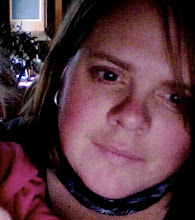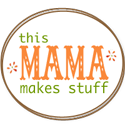Lot's of Lexi's Little Leg warmers
LITTLE LEG WARMERS
If you've never seen baby leg warmers, you are in for a treat! We are great leg warmer enthusiasts in this house: both of our girls are wearing leg warmers on most days - even in the summer time. They are a great layering item in the winter - keeping little legs warm when those pant legs ride up, a cute and practical alternative to tights, they help keep baby socks ON, they protect delicate knees from hard floors and rug burns when crawling and learning to walk, they make diaper changes and potty training a breeze, and they are a great way to keep sun off of that precious baby skin in the summer time. And did I mention cute? SO darn cute!!
Ophelia, 11 months, Bumblebee Babylegs
The original baby leg warmers are BabyLegs. And they are a fantastic, well made product. You can get them at any number of online stores and in an incredible array of cute colors and prints. We have a small fortune in BabyLegs in our baby drawers around here. That's because they run from $12 to $15 a pair. Yikes!
So what is a tiny fashion plate to do, not to mention TWO tiny fashion plates? My friend Lexi figured it out. She turned some inexpensive, yet very cute, knee socks into Little Leg Warmers. She even wrote a tutorial on her blog: Little Leg Warmers in Six Easy Steps.
I got the tip off yesterday that Target was having a sale. And boy did I take advantage. I bought 17 pairs of knee socks for less than the cost of 4 pairs of Babylegs.
The whole stack of wonderful socks!
Blue for Twin Boys a friend of mine was just blessed with.
Girls can wear blue too. 3 pairs for $5!
The purple set!
St. Paddy's Day Legs! These were a splurge at $5/pair.
Warm colors. And only $2 a pair.
Super soft argyle style. Middle of the road at $3.50 a pair.
My plan is to cut and pin them tonight and sew them over the next day or so. Stay tuned for a photo of the completed leg warmers.
Posted at
6:12 PM
|
![]() |
0 Comments
|
0 Comments
Tawashi
ACRYLIC TAWASHI
It's a Scrubbie!
I will start off with an obligatory Tawashi joke: What is a Tawashi? It's a scrubbie tawashi things with! HA HA HA HA!
Seriously, now. It really is just a basic scrubbie. The traditional Japanese Tawashis were made from hemp palm and resembled more of a brush than a scrubbie. A Tawashi can be anything from a loofah to a sponge to a ball of steel wool: if it fits in the palm of your hand and you can scrub (and therefor clean) things with it, it's a Tawashi.
I first saw these nifty little things on my friend Lexi's blog: Full of Knit. Here you can see a great list of reasons why Tawashis are Sugoi (that's 'great' in Japanese). She also promised to post a tutorial on how she made them, but she never did....so I was inspired to go out and find a free, fun, and easy pattern for one. And since Ophelia was looking over my shoulder while I was searching, I decided that my first one would be a Bath Tawashi for her. And here it is:
The pattern for this Tawashi is from How to Crochet a Tawashi on CraftStylish. I made this exactly as the pattern is written with the exception of using a single color yarn instead of three different colors. This was very easy to crochet, and while I can't say that I can make them at 'factory speeds', my goal of one a day for the next week is not outlandish. I used a Caron Dazzleaire acrylic/nylon blend in MULBERRY 2676 to make this one. It's soft enough to use on delicate skin and the pattern creates a nice texture that is great for exfoliating. And it is machine washable and dryable - so we can reuse these, unlike those plastic bath poofs or the dreaded kitchen sponges that need to be tossed out when they get funky.
You can make them out of any yarn you have on hand. This is a great stash buster project, as it uses very little yarn.
Here are a couple of lists of patterns for crocheted and knit scrubbies, dishcloths, and Tawashis:
Posted at
2:39 PM
|
![]() |
2 Comments
|
2 Comments
Stack and Hack© Tutorial
STACK AND HACK© TUTORIAL
How to make your own Wacky Fabric©
~~FOR PERSONAL USE ONLY~~
This method of making Wacky Fabric© was shown to me by my mother. The first time I saw it, was on a quilt that she made for my daughter Ophelia.
MATERIALS:
- At least 3 different color/patterned pieces of fabric that are the same size. Fat quarters are ideal for this, but you can use any size that you would like, as long as all of the fabric pieces are the same size.
- Rotary cutter, mat, and ruler
- Quality thread
- Sewing machine and basic sewing notions: bobbins, scissors, pins
- Iron and ironing board.
For this tutorial, I used 5 fat quarters in varying shades of purple batik.
Step 1: Wash, dry, and press your fabric pieces.
Step 2: Stack your fabric with right sides facing up and as evenly as possible. I like to line up the selvedge edges and then trim any uneven or raw edges so the fabric is all the same size and squared up.
Fat quarters ready to be squared up. (No, you are not colorblind. I forgot to photograph the purple before making the first cut, so these green ones are standing in.)
Step 3: Cut your fabric at an angle. Any angle but 90º. There is really no wrong way to do it. For this tutorial, I made my first cut lengthwise and approximately in the middle.
Step 4: Take the top piece of fabric from the right hand stack and move it to the bottom of the stack.
Step 5: Taking the top piece from each stack, sew each fat quarter back together: Place right sides together, pin in place (or not, if you are wild like me), sew a straight seam with 1/4" to 3/8" seam allowance. I used a 3/8" seam allowance for this tutorial. Keep your pieces in order and oriented the same as when you started. I used the selvedge edge as my 'top' to help me with this.
Fat quarter after first 'hack' and sewn back together.
Step 6: Press seams open.

Seam pressed open on wrong side of fabric.
Step 7: Re-stack your fabric so the edges are even and aligned. Again, make sure you keep the layers in the same order and oriented so the same side is always on the right.
Repeat steps 3-7 until you get your desired result.
Second cut made to the right of the first and at a different angle. Getting ready to make a third cut at yet another angle.
A fourth hack to the right of the second one and a fifth hack to the left of the third gives me six long sections.
Hacking in the opposite direction.
A second hack with the right side pile re-stacked.
A third hack with the right side pile re-stacked.
A fourth hack with the right side pile re-stacked.
Five "Wacky Fabric©" Fat Quarters: each is unique.
The new pieces are considerably smaller than the original Fat Quarters.
You can now use your Wacky Fabric© any way you like. Sew four of the quarters together to make a larger piece that is the perfect size for a baby or lap quilt top. I used mine as a decorative fabric on the outside of my first Montana Mei Tai©.
Remember, there is no wrong way to Stack and Hack. I made more hacks because I wanted a smaller scale to my pattern. You can make fewer hacks to achieve a larger scale.
Here are a few examples:
Quilt for Ophelia, made by my mom.
Quilt for Ophelia, made by Miss Viv
Quilt for Rowan, made by Miss Viv
~~FOR PERSONAL USE ONLY~~
Happy Crafting!
Posted at
10:04 PM
|
![]() |
0 Comments
|
0 Comments
A Wristlet for My Sister
Wristlet with Lap Closure
Flashback to December 2009. I was frantically sewing projects for Christmas presents: hats for my dad and brother in-law; soap socks, bag cozies, and scented sachets for our family gift swap, outfits for my girls. But what to make for my sister? She can be a tough one! I had gone to a very fun Cardmaking Class in November and I had decided that I was going to gift the cards I made to her, but that just didn't seem like it was enough. Then I stumbled upon this great Wristlet Tutorial at Javajem Knits. Perfect. And I had just enough fabric left over from a bag I had made for her! YAY! I didn't have a zipper on hand, so I modified the pattern slightly to make a lap closure on the wristlet. And I made it just the right size to fit those hand made cards into. So now she has a nice little 'card wallet' that she can keep in her matching shoulder bag. And when all of those cards are used up, she can use it to keep other junk in! Cute, and surprisingly easy. I used scrap fabric, lightweight fusible web scraps, and coordinating thread. Be sure to check out the links above to see the cool cards I made and also to see the entire tutorial on how to make one yourself!
Happy Crafting!
Posted at
1:22 PM
|
![]() |
0 Comments
|
0 Comments
Subscribe to:
Posts (Atom)


































